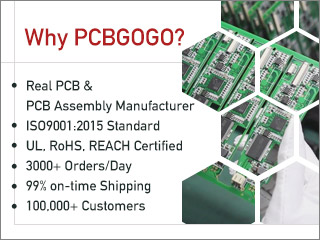Cleanliness Control Standards for Medical Device PCBA
Introduction
In the field of medical electronics manufacturing, the cleanliness of PCBA (Printed Circuit Board Assembly) directly impacts device reliability and patient safety. Unlike consumer electronics, medical equipment PCBA must meet far more stringent cleanliness standards. This article explores the cleanliness requirements, control methods, and verification procedures for medical-grade PCBA, and shares PCBGOGO’s hands-on experience in medical electronics manufacturing.
1. Understanding Cleanliness Standards for Medical PCBA
1.1 International Standards
IPC-A-610 Class 3: Applicable to high-reliability electronic products
ISO 14644-1: Standards for cleanrooms and controlled environments
IEC 60601-1: General safety requirements for medical electrical equipment
1.2 Special Requirements
Medical PCBA must pay particular attention to:
Ionic contamination levels (typically ≤ 1.56 μg/cm2 NaCl equivalent)
Particulate residue (limits on particles ≥ 5 μm in size)
Bioburden control (sterility required for some implantable devices)
PCBGOGO, while serving a pacemaker manufacturer, optimized its cleaning process to reduce ionic contamination to below 0.8 μg/cm2, significantly improving product reliability.
2. Key Points in Controlling the Production Environment
2.1 Cleanroom Requirements
Recommended minimum: ISO Class 7 (10,000 level)
Temperature and humidity: 22±2°C, 45±5% RH
ESD protection: Surface resistance of workstations between 10?-10?Ω
2.2 Personnel Management
Strict protocols for cleanroom attire
Limited number of personnel in clean areas
Regular training in cleanroom practices
3. Critical Cleaning Technologies in Manufacturing
3.1 Cleaning Process Selection
Water-based cleaning: Environmentally friendly, suitable for most medical PCBAs
Solvent cleaning: More effective on stubborn flux residues
Plasma cleaning: Used for high-precision requirements, such as implantables
3.2 Drying Control
Vacuum drying to avoid secondary contamination
Drying temperature generally does not exceed 60°C
PCBGOGO recommends proceeding to the next process within 2 hours after cleaning
4. Methods of Cleanliness Verification
4.1 Ionic Contamination Testing
Measured using a ROSE tester for NaCl equivalent
Sampling locations should include high-density areas and edges
4.2 Particle Detection
Microscope inspection (100–200x magnification)
Automated Optical Inspection (AOI) systems
4.3 Surface Insulation Resistance Testing
In accordance with IPC-TM-650 2.6.3.7
Test conditions: 40°C, 90% RH, 96 hours
5. Common Issues and Solutions
5.1 White residues after cleaning
Possible causes: poor water quality or incomplete drying
Solution: use deionized water and optimize drying parameters
5.2 Excessive ionic contamination
Possible causes: unsuitable flux or insufficient cleaning time
Solution: switch to low-residue flux and extend cleaning duration
Conclusion
Cleanliness control for medical device PCBA is a comprehensive task requiring strict management across environment, processes, and materials. Through years of experience in medical electronics manufacturing, PCBGOGO has developed an effective cleanliness control strategy to help customers meet even the most demanding medical standards. For manufacturers of medical electronics, building a robust cleanliness control system is not only a regulatory requirement—it is a critical guarantee of product quality.


